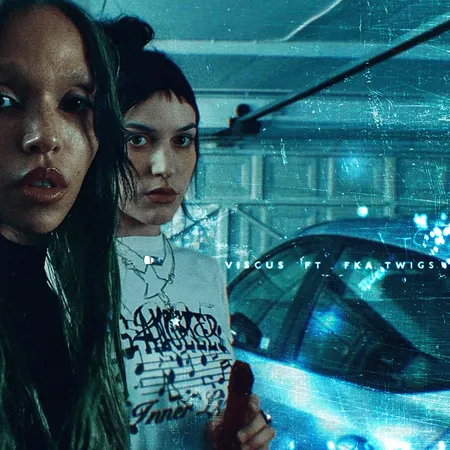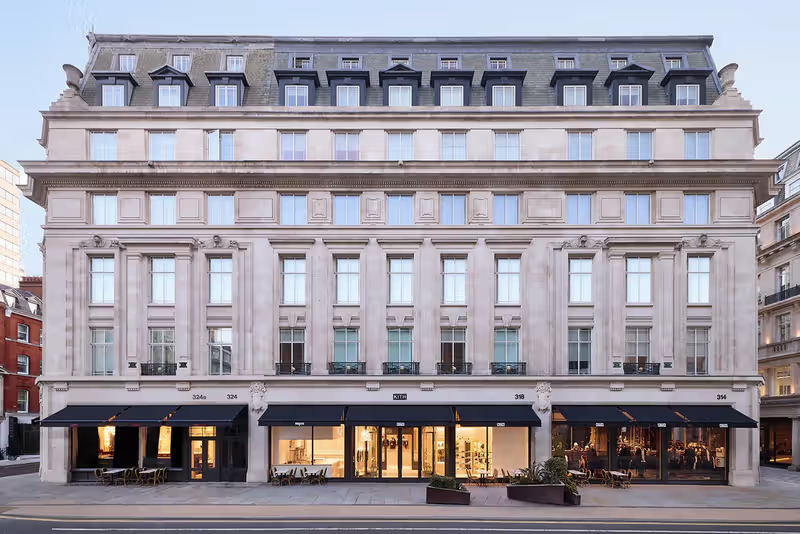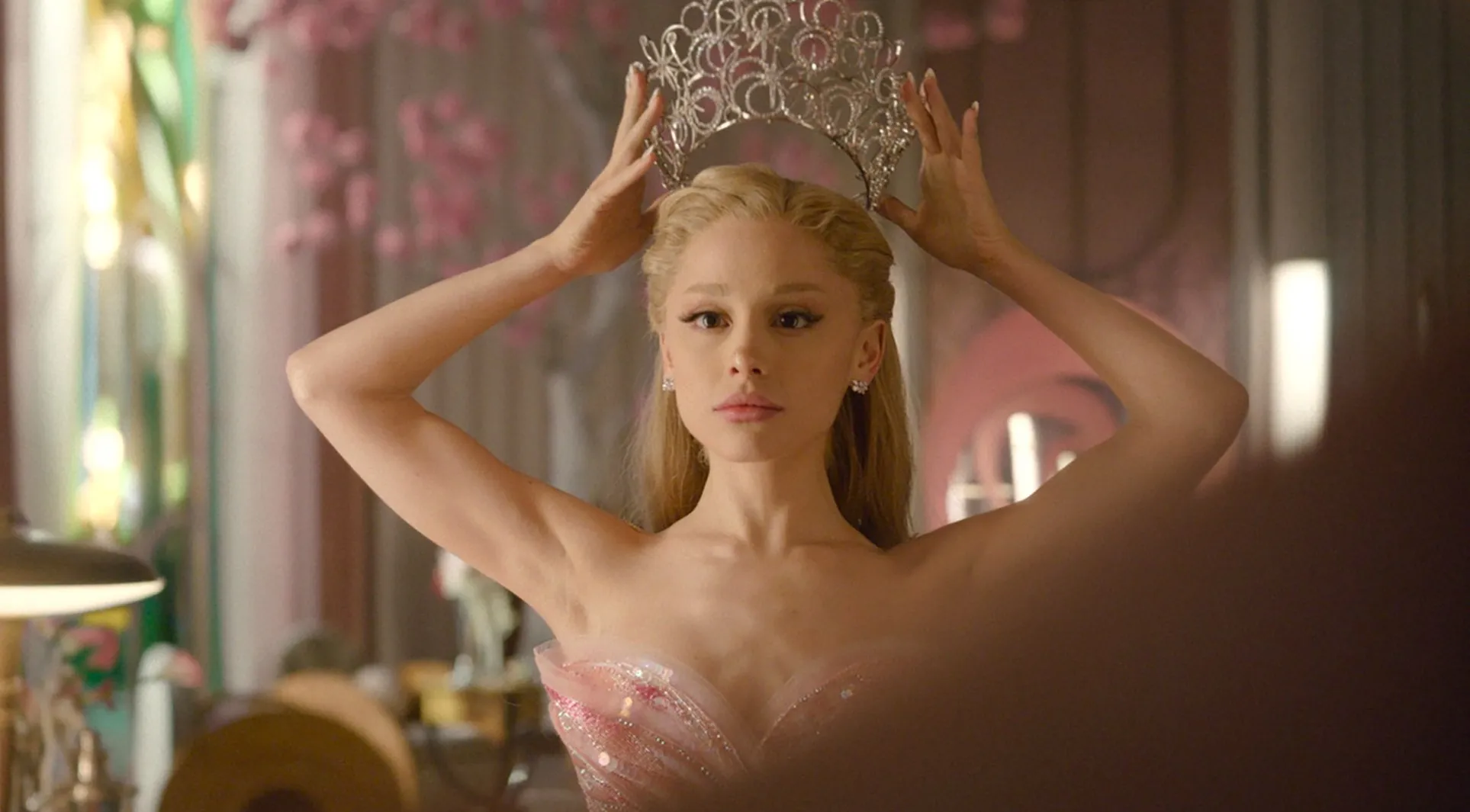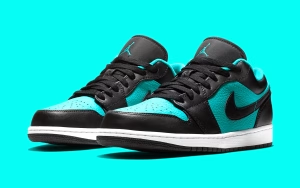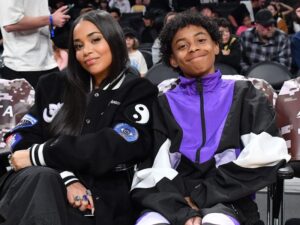There’s a collective emotive that feel engineered for virality, and there are those that simply happen — as if drawn together by invisible gravity. Oklou and FKA twigs belong to the latter category. Both have spent their careers moving along the fine line between the organic and the synthetic, crafting sonic ecosystems where human emotion breathes through digital air.
Their first joint work, “viscus”, the lead single from Oklou’s forthcoming deluxe edition of choke enough, feels like a natural collision. Directed by Gil Gharbi, the video places the two artists inside a suburban interior that oscillates between the mundane and the mystical — a house that seems to hum with its own nervous system. The result is a short film that feels less like a music video and more like an autopsy of feeling, a slow dissection of what it means to inhabit one’s body in the age of digital translucence.
behind the scenes: a domestic haunting
B-t-s coverage reveal a small garage overflowing with life’s leftovers: a dartboard, stacked boxes, a tilted lamp, the soft decay of time. The lighting is deliberately imperfect, a chiaroscuro of tungsten glow and silhouette corners. Crew members fade into the periphery as Oklou and twigs stand amid clutter that looks half-forgotten, half-reclaimed.
Nothing about the space screams “set.” It feels found rather than built — as though the artists have stumbled into someone’s abandoned memories. In one image, twigs adjusts her posture under a flickering bulb; in another, Oklou crouches against a wall where sunlight leaks through blinds. Even in still form, the pictures pulse with unease. The air looks thick, the dust visible, the silence tangible.
That attention to imperfection marks the beginning of a larger visual philosophy. In an era when many pop videos drown in LED sheen and 3D rendering, “viscus” turns deliberately inward. The clutter, the dim light, the slightly off framing — all become part of a new kind of beauty, one rooted in emotional residue rather than surface perfection.
View this post on Instagram
the video: movement, silhouette, hesitation
When the finished film opens, Oklou wanders through the dim rooms of a house that feels alive. Twigs appears as a spectral echo — a figure both real and imagined — as if conjured from Oklou’s own unease. There is little plot, no narrative closure. Instead, director Gil Gharbi composes “viscus” as a choreographed trance: glances, gestures, and spatial disorientation replacing story beats.
Doors open and close without reason. Curtains breathe. Mirrors refuse to give back clear reflections. Light crawls along surfaces, touching skin, receding again. The camera drifts between rooms, often framing Oklou or twigs through doorways or glass panes, as though intruding on private ritual.
At moments the camera moves close enough to feel breath; at others, it lingers across the room, watching with clinical detachment. This oscillation between intimacy and observation defines the piece. It is a film about the push and pull of presence — about wanting to be seen and wanting to disappear.
embodiment as language
FKA twigs has long been a patron saint of movement — a performer who turns dance into spiritual inquiry. Here, though, her choreography is stripped to essentials. She doesn’t command the frame; she negotiates with it. Every motion seems pulled from muscle memory, slow, deliberate, almost defensive. Oklou mirrors this tension with gentler gestures, her body language hesitant, grounded, human.
Together they form an ecosystem of motion and stillness. Twigs’ body speaks in tremors; Oklou’s in breaths. The choreography becomes conversation — two versions of vulnerability meeting halfway. There are no synchronized routines, no climax; instead, their movements are call-and-response, like nerves firing in parallel.
In visual terms, it’s the antithesis of the high-octane pop performance. Rather than conquering the frame, the performers yield to it. The result is a new kind of power: quiet, tremulous, interior.
aesthetic restraint as rebellion
Pop’s visual culture has long relied on excess — the bigger, brighter, faster image. But “viscus” belongs to a new wave of anti-spectacle. Its power comes from withholding. The camera rarely gives the full face; emotion lives in periphery. The space feels incomplete, deliberately unsatisfied.
This restraint reflects a wider trend in contemporary art-pop: a migration from polished maximalism toward fragment, texture, and ambiguity. Artists like Caroline Polachek, Ethel Cain, and Arca have already leaned into cinematic minimalism, yet “viscus” crystallizes it into a language of its own.
In this language, imperfection becomes intentional. The barely visible becomes meaningful. The domestic replaces the cosmic. It’s not about building worlds anymore — it’s about excavating rooms we already live in.
the BTS lens: where artifice collapses
Behind the scenes, the supposed divide between performer and environment collapses. Photographs capture moments between takes: twigs adjusting a light, Oklou half-smiling, the director crouched beside a monitor. These in-between instants are as revealing as the video itself.
They show that vulnerability isn’t only performed — it’s produced. The crew’s quiet attention, the way twigs touches the set walls as if testing temperature, Oklou’s stillness before the camera rolls — all these gestures belong to the same emotional ecosystem.
In many ways, the BTS imagery completes the work. It reveals the making as part of the meaning: a process of turning the ordinary into the spectral. The boundaries between fiction and rehearsal dissolve. What remains is atmosphere — the hum of artistic empathy.
style
To understand why “viscus” matters, one must situate it within a broader visual movement. Pop once aspired to cinematic perfection; now it chases emotional precision. Directors trade CGI worlds for hand-held fragility, neon gloss for the murk of natural light.
This shift began years ago in the fringes — in the intimacy of bedroom-shot videos, in slow art-pop films that prized texture over clarity. But the success of artists like FKA twigs and Oklou signals that this sensibility has reached the cultural center. “Viscus” isn’t an outlier; it’s a milestone of a new aesthetic order: the hyper-felt.
Hyper-felt imagery privileges atmosphere, embodiment, and vulnerability over spectacle. It is the cinematic language of a generation raised online but hungry for something tactile. In this grammar, light leaks are emotions, dust motes are metaphors, silence is rhythm.
an art of subtlety
FKA twigs has long treated the body as instrument and interface. Her past videos — from “Cellophane” to “meta angel”— built cathedrals of motion. Oklou, by contrast, crafts soundscapes that hover between lullaby and lament. In “viscus”, these worlds intersect.
Twigs brings the dramaturgy; Oklou, the tenderness. Their coexistence reframes pop collaboration itself — less duet, more dialogue. Each artist mirrors the other’s emotional temperature. Their shared gaze, often oblique to the lens, creates tension between awareness and withdrawal.
That mutual respect defines the video’s quiet potency. Neither dominates; both dissolve. What remains is a mood — half-grief, half-grace — suspended in amber light.
the flow of discomfort
Discomfort is the engine of “viscus.” Every frame trembles with it: a shoulder tense under fabric, a door slightly ajar, a dartboard lurking behind blurred focus. The film’s genius lies in converting that unease into empathy. We feel the anxiety without being told to.
This is achieved through what cinematographers call negative space emotion: leaving room for feeling to breathe. When the frame empties, the audience fills it with their own restlessness. The darkness between shots becomes psychological mirror.
It’s a bold reversal of pop’s usual logic. Instead of overstimulation, “viscus” offers deprivation — and in that deprivation, revelation.
the house as psyche, the light as pulse
If the house is the body, then light is its circulation. Watch closely and you’ll see how illumination migrates: from hallway to hand, from hand to hair, from hair to wall. Each transition mirrors emotional movement. The light never rests; it flickers, strains, retreats.
There’s one fleeting shot — twigs kneeling by a window, Oklou standing behind her — where sunlight briefly floods the frame. For a moment the tension breaks, warmth returns. Then the camera cuts. The relief is temporary, but its brevity makes it sacred.
In that flicker lives the song’s essence: a fight for peace inside a restless vessel.
the beauty of what trembles
In the final frames of “viscus,” Oklou and twigs stand near each other but do not touch. The camera hovers, hesitant to decide either they are friends, reflections, or fragments of the same consciousness. Then darkness. The music fades, leaving only the hum of the room.
It’s a fitting conclusion for a piece that refuses resolution. Viscus doesn’t aim to soothe; it asks to be felt — viscerally, bodily, quietly. Its imagery lingers like aftertaste, or like light behind closed eyes.
What we witness behind the scenes and on-screen is the same pursuit: to capture the moment when artifice meets vulnerability, when digital shimmer yields to flesh, when two artists step into the half-lit space between pain and grace — and find, if only for a breath, that they are human together.
No comments yet.

